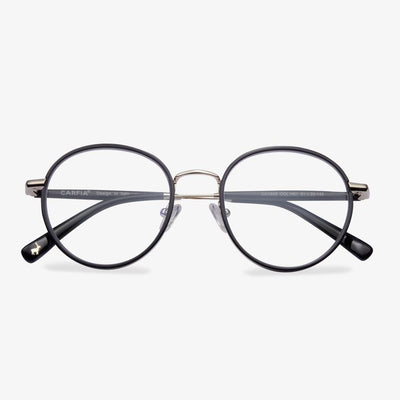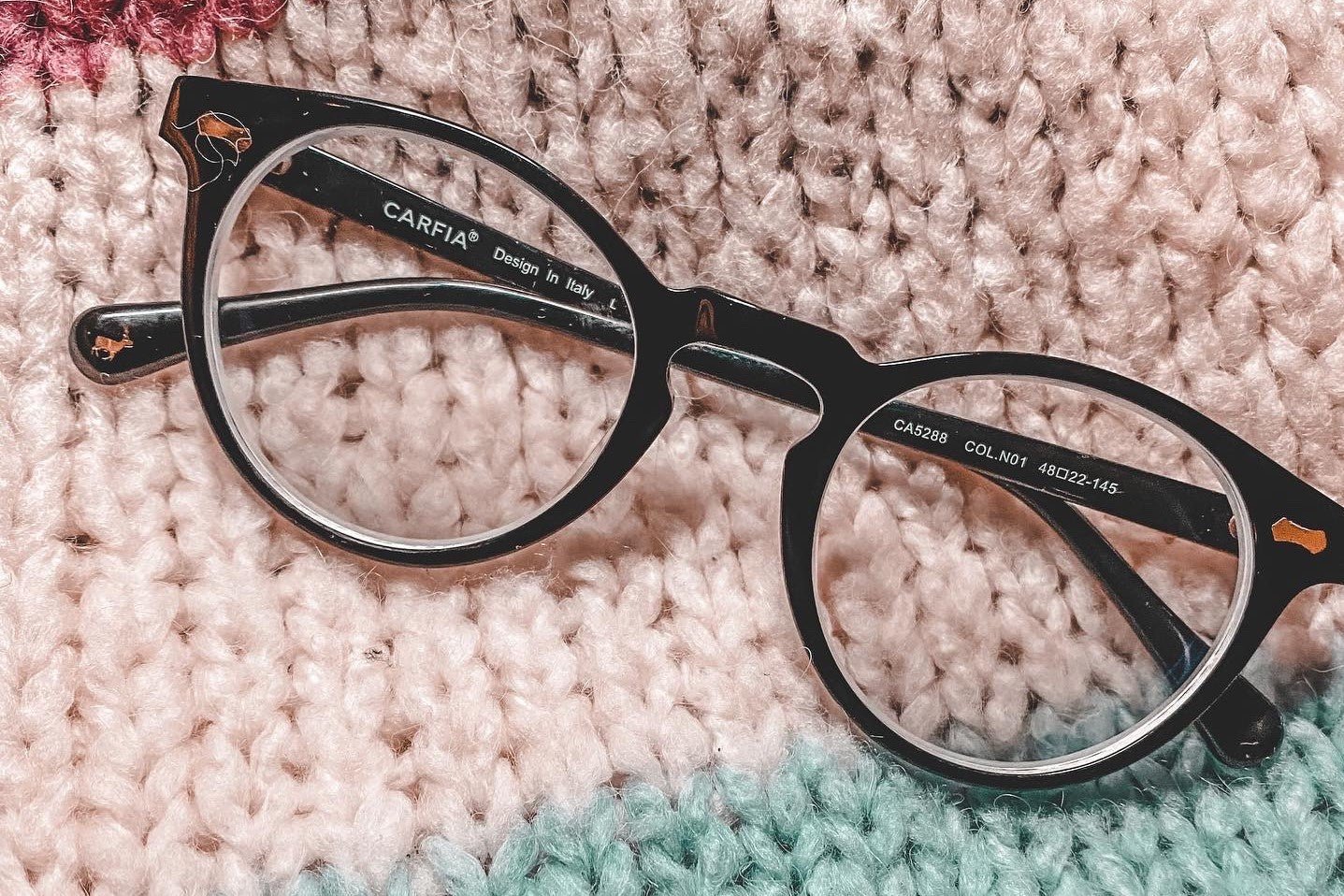Benefits of Blue Light Glasses
In this section, we will show you the benefits of blue light glasses.
- Relieve eye discomfort with blue-light blocking glasses. Excess device usage can lead to computer vision syndrome or digital eye strain. Blue light glasses can enhance your focus and reduce eye strain, resulting in making your eyes feel less tired and improving productivity. Another way to reduce eye strain is to make sure you take regular breaks from the screen.
- Blue light glasses can affect your sleep. Blue light has a high energy frequency that can increase alertness and delay the body’s release of melatonin, which helps induce sleep. In general, you had better not use blue light devices one to two hours before sleep. Blue light glasses can reduce the impact of blue light, enabling you to use your devices before bed and still get a good sleep.
- Blue light glass can help reduce the likelihood of Age-Related Macular Degeneration. AMD is a leading cause of blindness. Blue light blocking lenses can help avoid or delay this condition by preventing blue light from impacting your eyes.
Of course, besides those benefits, there are some other benefits of blue light glasses. For example, blue light glasses can relieve headaches.
Color process of Contact lenses
Pigment printing process
It refers to the direct printing of pigments or patterns on the inside of the lens and then drying, which is the main production process of poor-quality chromatic contact lenses. Usually, small factories and small workshops use this method. The lens is being phased out because the pigment can easily seep out from the surface during wearing, causing discoloration and staining, and irritation to the eyes, which is a big risk.
Pigment build-in process
To be specific, the lens made by sandwich technology is a three-layer structure, the front and rear are colorless transparent layers, and the middle is a colored layer. After the processing of sandwich technology, the color layer is wrapped in the middle of the front and rear transparent layer, so that the pigment will not contact the eyes, which will not cause irritation and injury to the eyes. The downside of this process, however, is that the lenses are slightly thicker than normal contact lenses and are less oxygen-permeable, so they are not suitable for long-term wear.
The pressed film manufacturing process
This is a relatively new method of a similar sandwich process, and the color (pattern) is also made between the front and rear layers of the lens. But the color (pattern) is used to fill in the film process. During lens curing, the pigment seeps into the material instead of sticking to the surface. It feels as if the lens is covered in color within a single layer. This reduces the middle layer and makes the lens thinner, which naturally makes it more comfortable and permeable to oxygen.
Need to re-adapt to new glasses
When the glasses were damaged, the glasses were not replaced in time. As a result, the nearsighted person wears old glasses and continues to look at things. The old glasses have 'remodeled' the eyes in the long-term process, and the eyes have adapted to the old glasses. Therefore, even if the power of the new glasses is the same as that of the old glasses, the new lenses will feel brighter. In this case, eyes produce uncomfortable symptoms. It is recommended to use the new glasses early the next morning. After a night's rest, the eyes will be easier to adapt to the new glasses. After a few days of continuous wearing, the dizziness symptoms will disappear.
Advantages of carbon fiber glasses frames
The main reason for choosing carbon fiber to replace traditional plastic and metal materials is that carbon fiber has the characteristics of lightweight and high tensile strength. Spectacle frames made of carbon fiber materials are significantly lighter than traditional metal spectacle frames. In addition, such spectacle frames are impact resistant, has high hardness, wear resistance, are not easy to deform, and will not fade. Also, the carbon fiber material has good biocompatibility and is often used in medical equipment, so it will not cause allergic reactions, and it is not easy to corrode and rust. The lightweight carbon fiber frame is easy to carry, and it is not easy to deform the bridge of the nose when worn on the bridge of the nose, relieves the burden on the nose and ears, is not easy to slip, and is comfortable to wear.
What kind of light is blue light?
Blue light is light of a certain wavelength. In the sunlight, including red light, orange light, yellow light, green light, blue light, indigo light, and purple light, blue light occupies a place. The wavelength of blue light is less than that of red light but greater than purple light. The energy intensity is also different, and the blue light is relatively less strong than red light. People must rely on the 'macula' to perceive light. The macula is a 'pearl' hidden in the fundus and the most important photosensitive part of the fundus. The macula can look at objects, generate electrical signals, and transmit the signals to the brain so that people can see the things in front of them clearly. Strong light shines directly on the eyes, and it is likely to cause damage to the macular structure at once.
What does vision insurance cover?
Vision insurance and vision benefit plans usually cover the cost of annual eye exams, prescription glasses, and/or contact lenses. Vision insurance includes traditional health/medical policies and health/discount plans that provide vision benefits and cover most. Coverage will vary depending on the type of vision insurance or vision benefit plan you choose. Group vision insurance is usually provided through an employer, an organization, or a government plan like Medicare or Medicaid. If you don't qualify for any of these options, you can purchase a personal vision care plan from a vision insurance provider.
How Do Prism Glasses Work?
After learning what prism glasses are, you should know how prism glasses work. So, in this section, we will show how prism glasses work.
People with binocular are struggling with seeing two images instead of a single image. The light they see falls in different places on their retinas, which causes distortion and doubling of what they are seeing.
Meanwhile, prism glasses are mostly used to deal with double vision, making it easier to maintain binocular vision, which is the ability to maintain focus on an object with both eyes. With the prism glasses, the light bent before it hits the retina. It is redirected so it falls correctly and the brain can interpret the message as getting in the usual manner, resulting in a single clear picture of seeing.










































